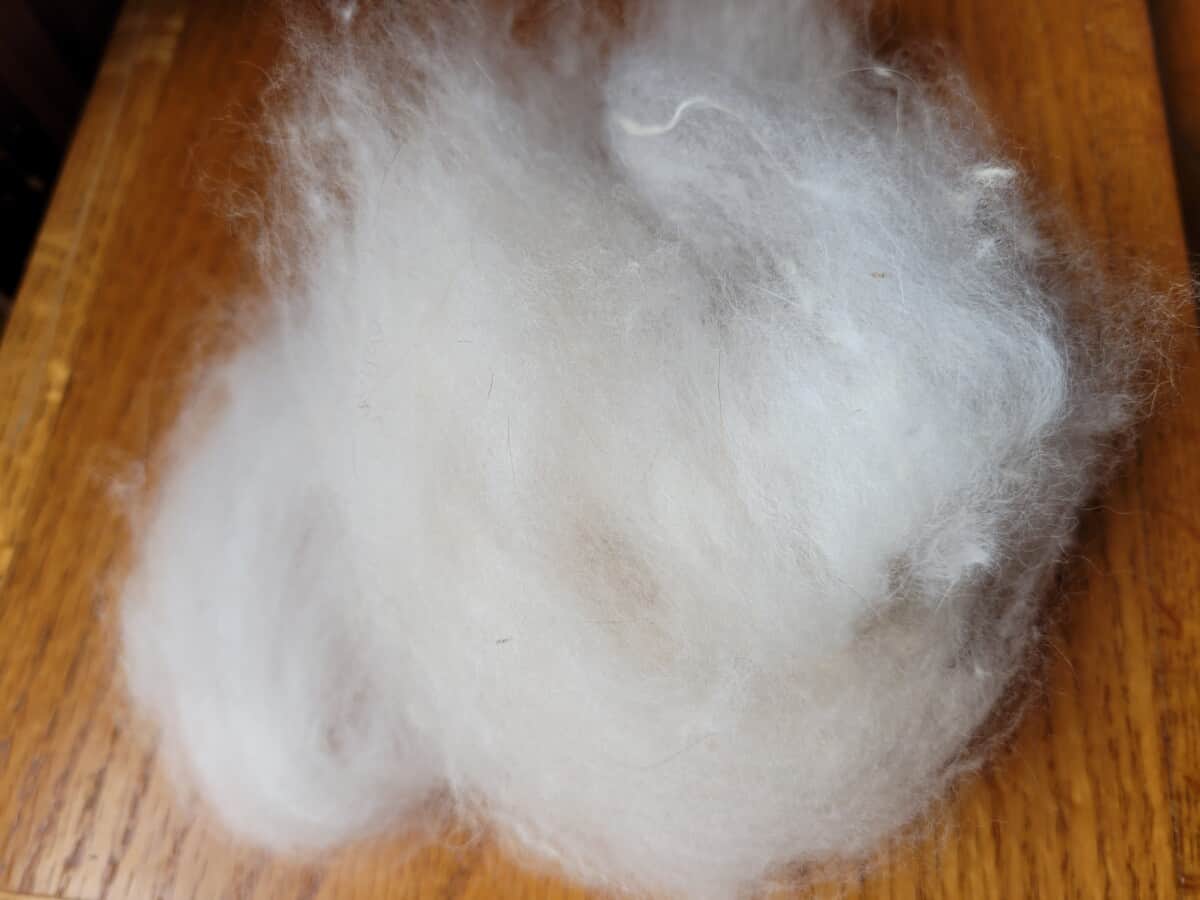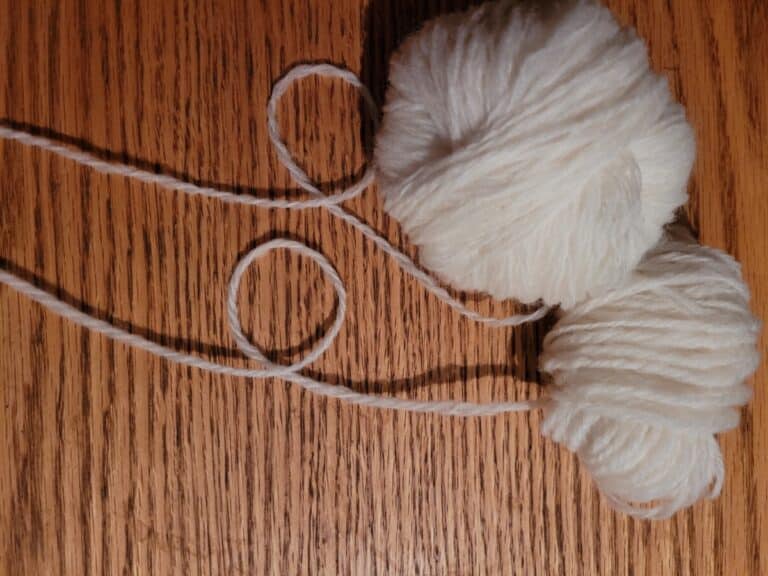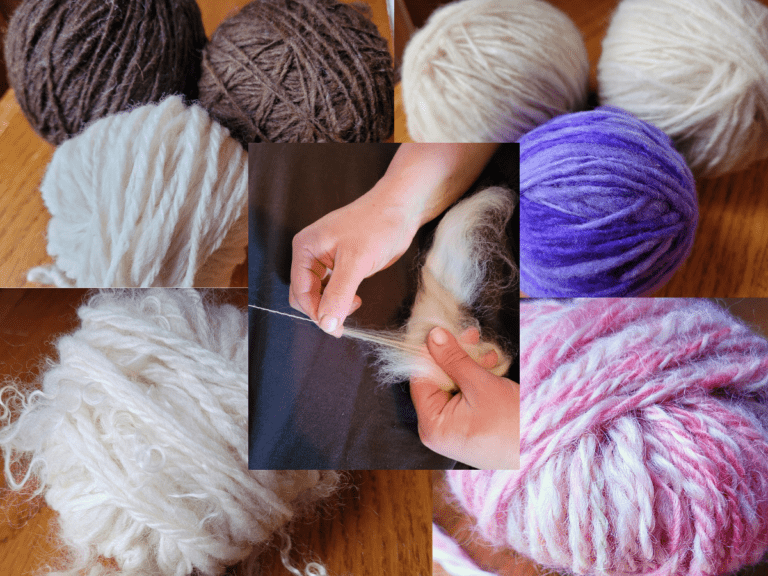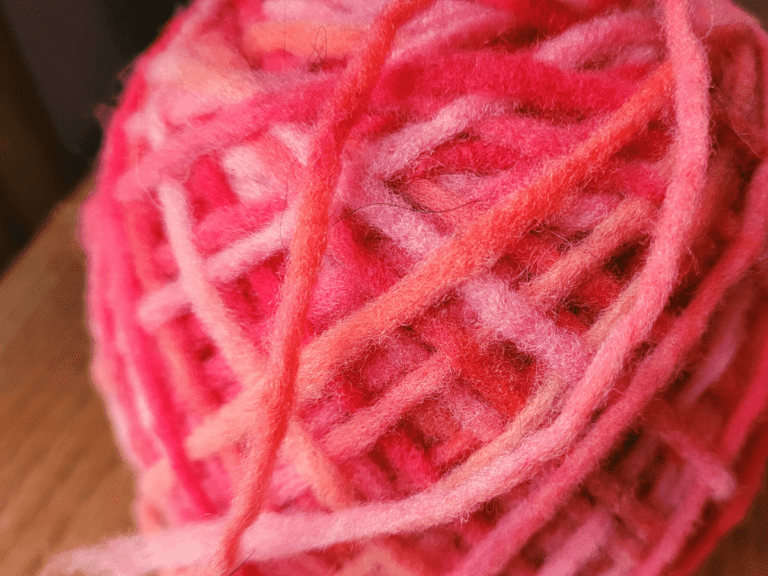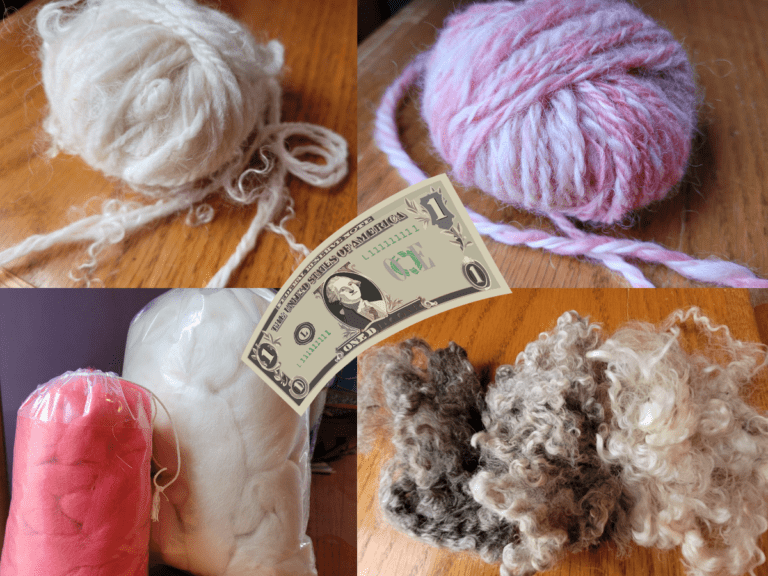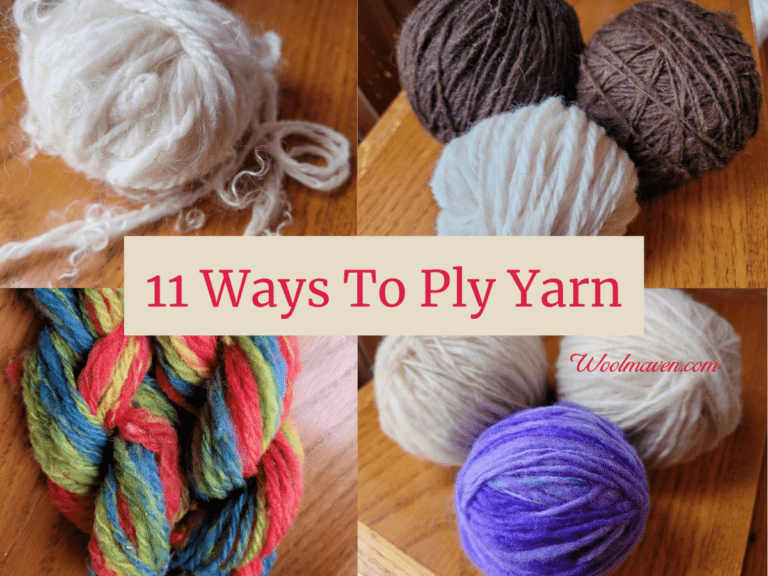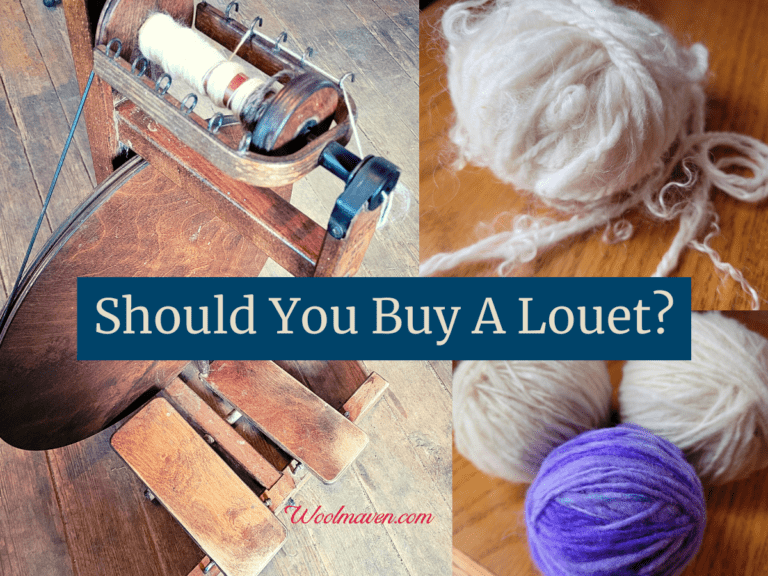Which Angora Rabbit Wool Is Best To Spin?
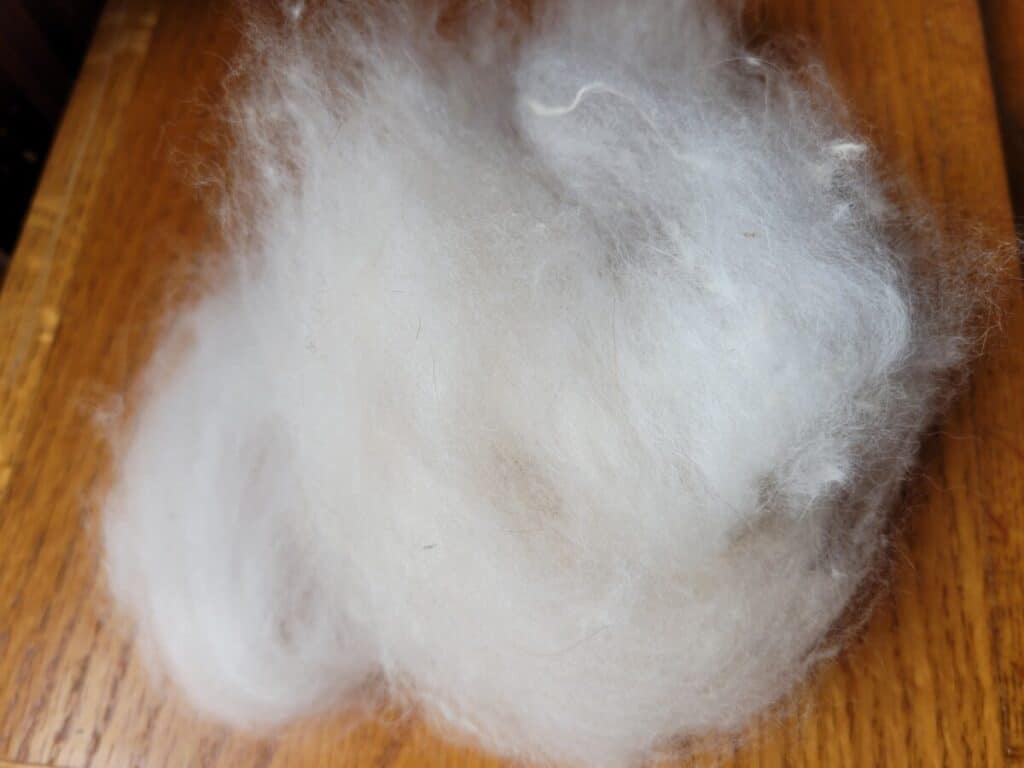
As you are searching around for angora wool to buy (or maybe you are shopping for a rabbit!), you’ll come to find that there are different types of angora wool.
Which type of angora wool is best to spin and why?
The best angora wool to spin is clean, no debris or nepps, and has a longer staple length. For angora with a softer halo, consider english or german angora. For a more dramatic halo, choose french angora and for angora with shine, choose satin angora.
While all angora wool will be incredibly soft, there are small differences in the fiber from the various types of angora rabbits.
Pros And Cons Of Spinning Angora lays out the high points and the challenges of working with angora fiber.
| Characteristic wanted | Best angora |
| Spinnable fiber | all angoras can produce spinnable fiber |
| Long staple length | prime fiber, possible from most angoras |
| Fiber for felting | non prime fiber from shearing, will be shorter lengths |
| Halo in yarn | all angora wool has halo |
| Soft halo | english |
| Dramatic halo | french |
| Less guard hair | english, german, satin |
| Naturally colored | english, french, german, satin |
| Only white | giant |
| Shorn wool only | german, giant |
| Shed or plucked wool | english, french |
The best angora fiber is clean and long stapled
The best angora fiber to spin is angora wool that is clean, meaning no VM (vegetable matter) and has a longer staple length.
Clean, debris free fiber just makes your life easier.
Of course, you can do your best to pick out the bits of hay or whatever else you find, but it will be easier just to not have the junk in the wool to begin with.
Longer staple length angora is easier to spin than shorter staple length angora.
The longer fibers will cost more, since they are considered to be the prime part of the coat and are worth it, since long is easier to spin.
How To Spin Angora gives you beginner level tips on working with this wonderfully soft fiber!
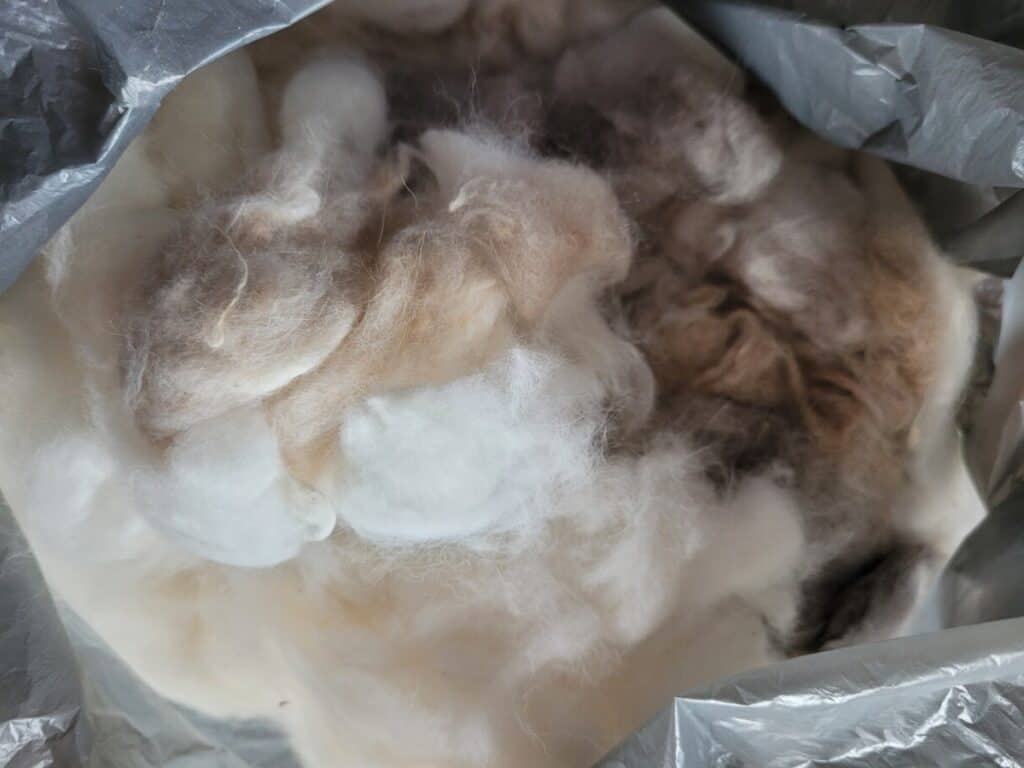
No nepps or matts in the wool
The other aspect of nice and easy to work with angora wool is that the fibers are well separated and straight, meaning they do not have nepps or matts.
Nepps are the little circular tangles that you see when you hold up a roving and try to look through it.
Nepps will make your spinning a bit more complicated, giving you one more thing to work around when you need to keep it simple.
If you like the look of nepps in yarn, super! Keep that angora in mind for later, once you know what you are doing with the wool that is nepp free.
Matts are just larger tangled masses of felted wool.
Matts form when the coat is shedding or rubbing and some of the older hair releases but does not get combed out, while the newer growth is still attached to the rabbit.
The released hair rubs around on the new hair and tangles up into a big knot on the rabbit. The matted wool is not recoverable.
The good news is that these matts can be easily cut out. The bad news is that if you bought this fiber, you have paid for something that you can’t use.
A high quality prime angora fiber will not have matts. A big bag of “as shorn” angora might, it depends upon the rabbit.
Angora breed based wool differences
There are a few breed based differences in angora wool.
French has more guard hairs
One breed difference, as far as wool goes, is that the french angoras have more guard hairs than other angoras.
The great news here is that with the guard hairs, the french angora is less likely to matt up before clipping.
This more easy care wool makes french angoras popular for new angora raisers.
The not so great part of guard hairs is that, for some folks, they are not soft enough for the projects the wool is intended for.
Not everyone can feel the guard hairs, so you may be fine with french angora in your projects, but if the angora you are working with is not as soft as you had hoped, consider using wool from a different breed.
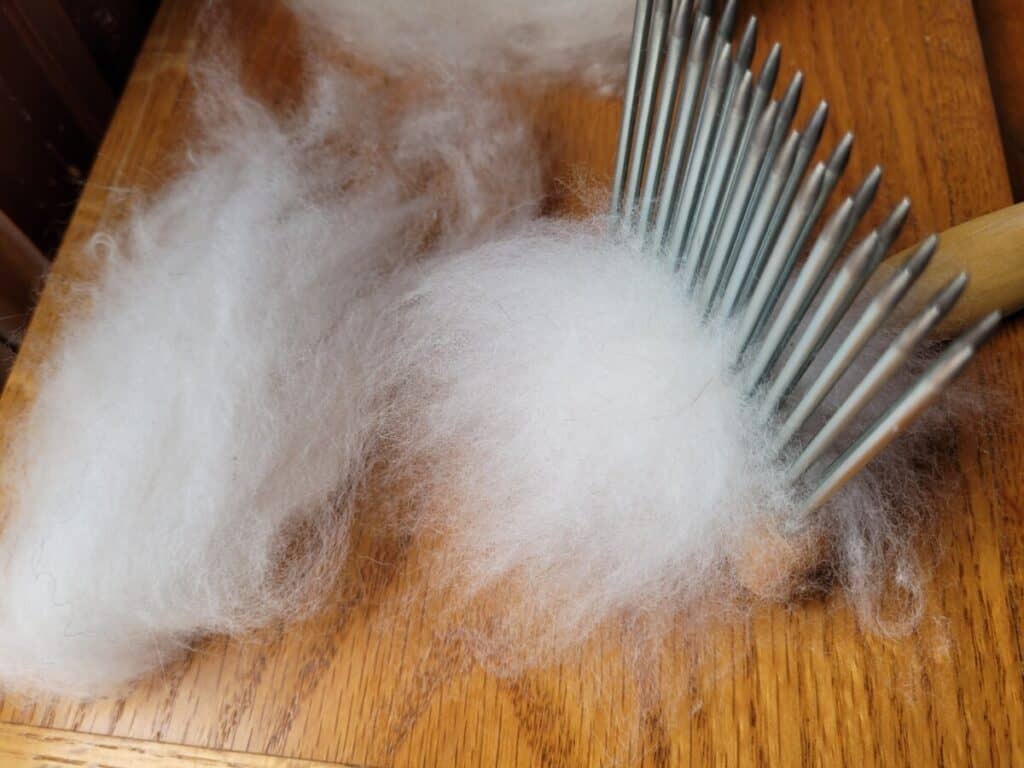
Angora wool has halo
Angora wool has a halo, which is the soft, blurred edge, kind of fuzzy look to the yarn.
The halo is a bit different in some angoras when compared with wool of a different of breed of angora.
All angora will have something of a halo, which will show more when the yarn is fulled (set and twacked to bring out the poof).
Generally speaking, english angoras have a softer halo and french angoras have a more dramatic halo, once again due to the guard hairs.
Satin angora has sheen
Satin angora wool is in a class by itself, it has sheen! The sheen in the coat of satin rabbits is what makes it look shiny and reflect the light.
Most angora wool, while being incredibly soft, is somewhat flat rather than reflective, which has shine or luster.
If you want angora with the luster, go for some satin angora wool.
Know that satin angoras have a low wool yield, meaning that this angora fiber will be more expensive than most, due to low supply and high demand.
While I have never had the pleasure of working with satin angora before, I would expect this wool to be more slippery than most other angora fiber, simply due to the shiny nature of the fibers.
Ask the seller for tips on spinning with satin angora, or consider blending it in with other angora to give a bit of shine to the entire project!
Angora fiber comes in colors
A final difference in angora fibers is color, which, in case you were wondering, does not seem to have much correlation to length.
This means that you can get a long stapled colored angora as well as a shorter stapled colored angora, the same holds true for white.
Most angora rabbits come in a variety of colors, with the exception of the giant angora which is only recognized as a ruby eyed white.
Color of angora fiber is always a light version of the color listed, so when you read that the fiber is black, what you’ll see is that the fiber is smoky grey.
This is normal, angora color washes out along the fiber length. Sometimes there can be bands of color on the fiber, but it will be lighter colored than the face.
The color of the rabbit is determined by the color of the normal length hair on the face rather than the looks of the coat.
I find that it helps to think of angora color as being about the same colors as a cat, just with less saturation in the spinnable fibers.
Angoras rabbits can be in a siamese cat style pattern, as well as spotted, have a face stripe, be a tortoise shell, be self (one color) and just about anything in between.
An interesting thing to note on angora color is that colors that you are familiar with look different when in a long stapled fiber.
For me, the agouti pattern (wild rabbit color) is not a color or look that I prefer, but in the angoras, I find that agouti coloration is lovely.
As a bit of an aside, if you are interested in angora colors, check out Angora Color Gallery at Dolly Rock Farm And Fiber.
This site has a listing of angora colors with great pictures and explanations. It’s neat to see what is possible with carefully planned, selective breeding!

